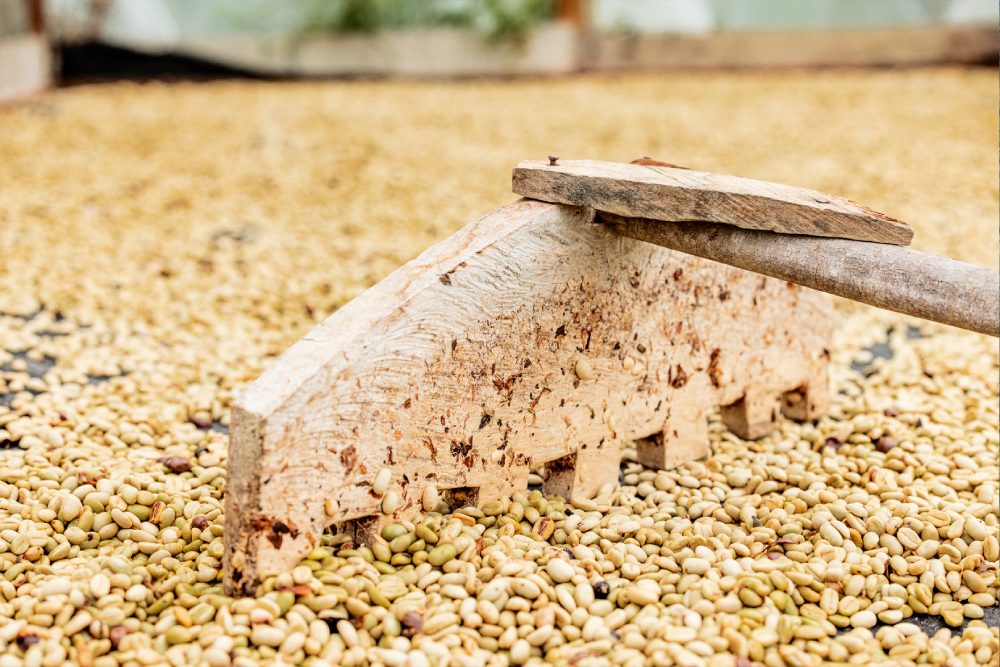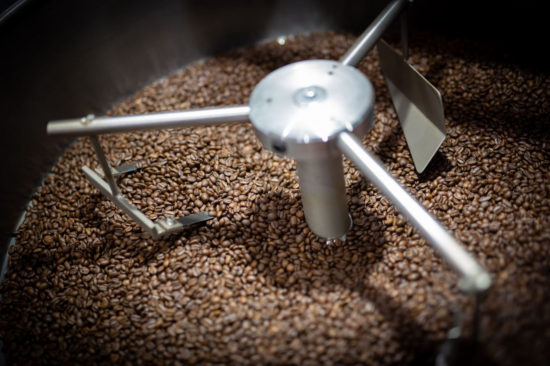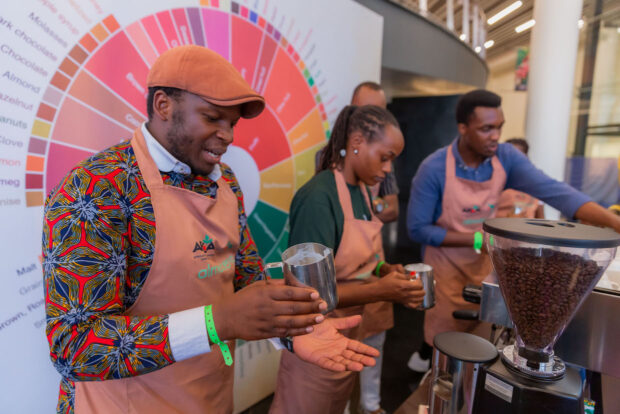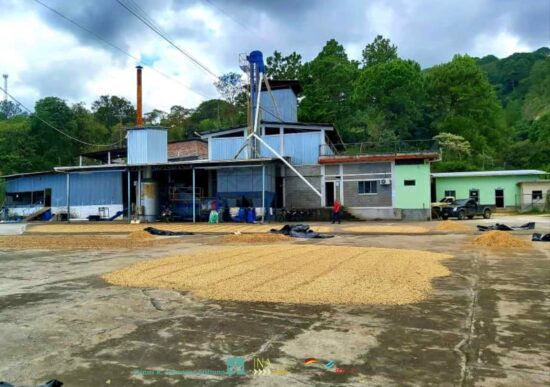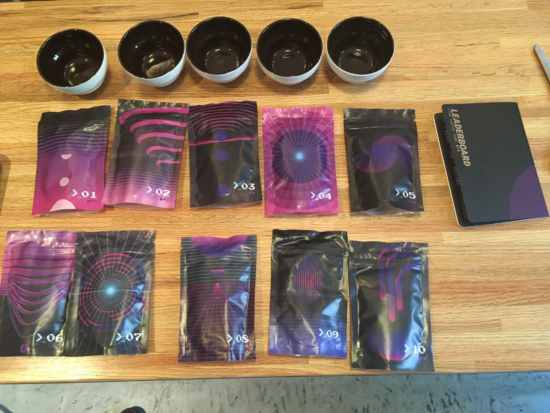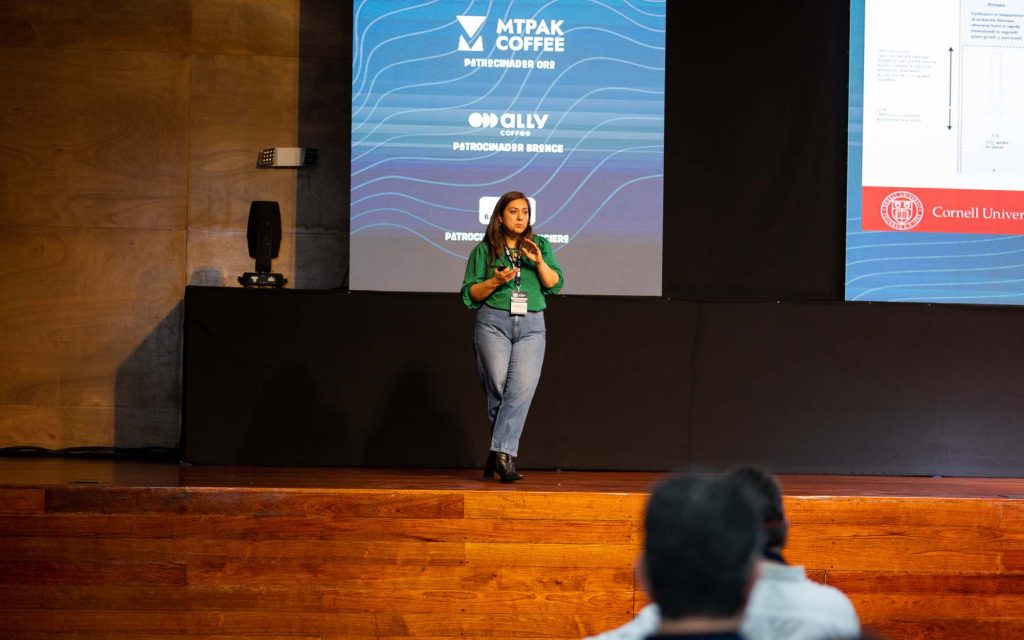The most affordable Keurig coffee maker is available exclusively at Walmart and comes at a sweet price of only $59.00. In this article, you’ll find out how good it really is, and also find additional information like how to clean it, or do you need a water...
Why are some coffee roasters switching to electric machines?
Why are some coffee roasters switching to electric machines?
Why are some coffee roasters switching to electric machines?
Why are some coffee roasters switching to electric machines?
Why are some coffee roasters switching to electric machines?
Why are some coffee roasters switching to electric machines?
Quick French Press Iced Coffee (No, It’s Not Cold Brew)
This is the absolute fastest way to make French press iced coffee. Just forget about cold brew concentrate – with this Quick French Press Iced Coffee Recipe you can have your iced coffee ready in 5 – 6 minutes. Who doesn’t like the French press?! It’s...
Here’s How to Change Keurig 2.0 Water Filter Easily
Not sure how to change Keurig 2.0 water filter? Here are step-by-step instructions that will help you do it quickly and easily. Keurig water filter should be changed every 2 months or 60 tank refills. The water filter is located inside the water tank, on the valve at...
The coffee rose for assessing Anaerobic coffee
I just came across this really neat tool to assess anaerobic coffees. I haven't used it for cupping yet. I'm not sure I will like it either because the idea of lowering the score of the coffee just because it tastes has some thyme flavors. At the same time I...
Three US Coffee Championship Events Are Heading To Rancho Cucamonga
This article is from the coffee website Sprudge at http://sprudge.com. This is the RSS feed version. The 2024 US Barista Championship, Brewers Cup, and Cup Tasters will take place March 15-17 at Klatch Coffee Roasters in Rancho Cucamonga, California.
The Origin Story of Turtle Island Coffee in Vancouver, B.C.
A new Indigenous-owned coffee company based in Vancouver, British Columbia, called Turtle Island Coffee has launched with the goal of exposing more people to high quality specialty coffee and Indigenous...
Get Ready for The Barista League’s 2024 Season
The Barista League has announced 12 competitions across four continents. BY J. MARIE CARLANBARISTA MAGAZINE ONLINE Photos courtesy of The Barista League When The Barista…
Get Ready for The Barista League’s 2024 Season
The Barista League has announced 12 competitions across four continents. BY J. MARIE CARLANBARISTA MAGAZINE ONLINE Photos courtesy of The Barista League When The Barista…
Get Ready for The Barista League’s 2024 Season
The Barista League has announced 12 competitions across four continents. BY J. MARIE CARLANBARISTA MAGAZINE ONLINE Photos courtesy of The Barista League When The Barista League announces new events, it’s worth paying attention! This year, the schedule will be...
Weekly Coffee News: EUDR and Africa + More Celebrity Coffee
Welcome to DCN’s Weekly Coffee News. Keep up with all the latest coffee industry stories and career opportunities by subscribing to DCN’s newsletter. Tell our editors about your news here. Report: Small-Scale Farmers in...
Do Higher Coffee Prices Mean More Money For Farmers? A Story From Sumatra Shows It’s Complicated
This article is from the coffee website Sprudge at http://sprudge.com. This is the RSS feed version. Since coffee costs more now than ever, do those coffee prices impact the amount of money earned by coffee farmers?
Coffee News Recap, 2 Feb: Applications open for Australia’s Richest Barista 2024, De’Longhi reports 4.6% revenue increase after La Marzocco move & other stories
Every Friday, Perfect Daily Grind rounds up the top coffee industry news from the previous week. Here are this week’s coffee news stories. The word of the week is: expansion. Mon, 29 Jan AeroPress launches limited-edition Clear Pink brewer. The coffee brewer is made...
Watch The 8 Best Coffee Videos Vying For Sprudgie Awards
This article is from the coffee website Sprudge at http://sprudge.com. This is the RSS feed version. The best coffee videos from 2023 featuring Cafe Imports, Aramse, Nguyen Coffee Supply, Wildly, Mirror Coffee Roasters, Alto Stories, Quek Shio, and Cafe Retiro.
Robusta is great and has untapped potential
I live in the US and my typical choice of coffee is lightly roasted Ethiopian pour overs. I generally love acidity and fruit flavors in my coffee. My experience with Robusta has often been poor. Very dark, roasty and maybe chocolatey. I participated in the Hoffman...
Design Details: Brewing Reinvented at ULA Café in Melbourne
Welcome to Design Details, an ongoing editorial feature in Daily Coffee News focused on individual examples of coffee shop architecture, interior design, packaging design or branding. If you are a coffee...
Robert Downey Jr.’s New “Happy Coffee” Is Really Depressing
This article is from the coffee website Sprudge at http://sprudge.com. This is the RSS feed version. Robert Downey Jr. and Craig Dubitsky team up for Happy Coffee.
Out Now: The February + March 2024 Issue of Barista Magazine!
In our new issue we feature Lisa Lawson from Glasgow, Scotland, take a look at the newest grinders, explore spring drink inspiration, see how more women are getting involved in coffee tech, and much more! BY SARAH ALLENBARISTA MAGAZINE We’re stoked to announce the...
The coffee industry’s biggest competition: The story of the World Barista Championship
Every year, the global coffee industry gears up for one of its most exciting and groundbreaking competitions: the World Barista Championship. For more than two decades, the WBC has been one of the biggest catalysts for change and innovation in specialty coffee, and...
The 2023 Specialty Coffee Transaction Guide Has Landed
The 2023 edition of the Specialty Coffee Transaction Guide (SCTG) guide went live today, providing actors throughout the coffee chain a data-driven tool for green coffee price discovery. The full...
Espro great until I needed replacement filter ☹️
I've had an Espro P7 for nearly four years after seeing glowing praise on this sub (to which I later contributed). Before I bought the P7 I looked at the replacement parts available and they seemed like a solid company in that they sold e.g. replacement filters...
New Bill Requires More Kona In Your Kona Coffee
This article is from the coffee website Sprudge at http://sprudge.com. This is the RSS feed version. Currently a coffee only need to be 10% Kona to be labeled as such.
What’s the best and worst part about owning and running a coffee shop?
I'm not interested in getting into it myself, as I have no experience in the service industry, no real appetite for risk and no desire to run a business in general. But sometimes I think about it and I wonder what's the most enjoyable thing about it and...
minimum dose size?
I use the Hario switch to brew my coffee and am trying to reduce my caffeine consumption. Hence I would like to brew smaller cups of coffee. I am currently using 10g of coffee with 160g of water. (1:16 Ratio) I am wondering if there is a minimum amount of coffee...
[CAFE OWNERS] Background before starting a shop?
I’ve worked in coffee for 6 yrs as a barista and shift supervisor and have passion for it. I’ve decided that I want to open my own place in the future and so I’ve been doing the research to make a business plan. Lately, however, I’ve begun to realize just how many...
Why are some coffee roasters switching to electric machines?
Around the world, many roasters rely on gas or electricity to roast their coffee. The type of energy used largely depends on the roaster’s equipment – including drum and fluid bed roasters.
However, with demand for sustainable coffee continuing to increase, as well as soaring shipping and energy costs, roasters are looking for new ways to appeal to consumers and reduce their spending. One of these includes investing in electric roasters.
So how do electric machines work, and which factors do roasters need to consider when using one? To find out, I spoke to two coffee professionals who work with coffee roaster manufacturer Stronghold. Read on to find out what they had to say.
You may also like our article on choosing a roaster for your coffee shop.

Exploring different types of coffee roasters
In previous decades, gas was the most commonly used energy source for roasting coffee – no matter which type of roaster was used. Drum and fluid bed roasters are the most common types of machines, with both capable of roasting coffee to a high standard of quality, whether using gas or electricity.
But in recent years, there has been a greater focus on electric machines, which allow roasters to have much more control over different variables.
Amir Navid is the CEO and founder of Kühne Kaffee in Hamburg, Germany – a regional distributor of Stronghold roasters.
“Comparing an electric roaster to a gas roaster is like comparing a Tesla with an old diesel car,” he says. “When roasting using gas-powered machines, roasters often have to make a lot of adjustments to their variables.
“But nowadays, roasters have to spend a lot more time on marketing their businesses,” he adds.
Traditionally, roasters would have to pay close attention to a number of different roast variables, such as temperature and total roast time. However, with the recent rise of electric machines, which often champion automation, roasters are able to spend more time away from their machines and focus on other areas of their business.
“[In some countries], you may also need to own a special licence and a certain type of insurance because of the carbon emissions produced,” Amir says. “Moreover, you also need to account for the additional costs of installing pipes and an afterburner when using a gas-powered roaster.”

Why are more roasters using electric machines?
There are a number of reasons why electric roasters are becoming more popular. One example is the ever-growing demand for more sustainable coffee.
Now more than ever, consumers expect the coffee they buy to be more sustainable. And while a large part of this is centred around more transparency and traceability in the supply chain, sustainability also extends to coffee roasting, too.
Traditional gas-powered roasters can emit several pollutants, such as nitrogen oxide, carbon monoxide, and carbon dioxide. These gases are not only harmful to the environment, but they can have serious effects on human health if inhaled in significant volumes.
Furthermore, these roasters rely on fossil fuels (mainly natural gas) to operate, which are known to contribute to global warming.
As well as this, in recent months, we have seen the price of natural gas rise sharply as a result of the conflict in Ukraine and economic sanctions placed on Russia.
Naturally, this means that the costs of operating a gas-powered roaster have also spiked – tightening many roasters’ margins and forcing them to look for ways to reduce spending.
“Roasters are looking for opportunities to minimise the uncertainty around fluctuating gas prices, as well as the possibility of supply shortages,” Amir explains.
For roasters who use gas-powered machines, the equipment is typically connected to a shared gas supply, which may also be used to heat the workspace, among other things.
This can also have an impact on the roaster. During colder months, for example, while the central heating is used more frequently, the pressure could drop in the roaster, potentially leading to less consistent roast profiles.
However, with electric machines, roasters can largely bypass these issues.
Alex Lee is the North America Regional Representative for Stronghold. He explains how electric roasters, such as the automated S9X smart roaster, can work more efficiently and accurately than gas-powered models.
“Rather than manually controlling gas flow, the roaster can manage all of their variables electronically throughout the entire roast,” he says.
Over the past few years, automation and AI have become more widely used in coffee roasting. In essence, these technologies allow roasters to better replicate roast profiles and to improve data analysis and application, thereby also improving coffee quality.
“In theory, a roaster should be able to perform as well as the manufacturer claims it can,” Alex tells me. “However, other variables like the roasting environment, maintenance issues, and even the coffee itself can affect performance.
“When you use gas, no matter how precise the roaster’s electronic control panels are, the energy generation is still too volatile to [have a higher level of control],” he adds. “By using electric automated roasters, we are able to mitigate potential errors as much as possible.”

Understanding how electric roasters work
For roasters to successfully transition from gas to electric roasters, they first must understand how the machines operate differently.
By far the most important factor to consider is the difference in heat transfer. In general, electric machines have more advanced heat transfer systems, which means roasters are better equipped to control a number of variables.
“Stronghold’s S9X electric roaster, for example, has a triple heat management system,” Alex explains. “This includes heat transfer through convection, radiation, and conduction, and the roaster can control all three methods independently of each other.
“This means you can develop roast profiles more purposefully, as well as having the ability to experiment more,” he adds.
In theory, having more control over different types of heat transfer allows roasters to more precisely control a roast. This can help them get the best out of a given coffee, and maybe even unlock a new flavour profile entirely.
“However, there are a number of factors which can influence how heat transfers from the machine to the coffee, such as the size and density of the beans, as well as varying levels of sugars contained within the beans,” Alex says.
Ultimately, roasters need to account for these differences when developing their roast profiles in order to get the best results from their coffee.
Temperature stability is also important for roasters. The more stable and consistent the temperature inside the machine is, the more consistent the roast profile will be.
“Stronghold’s X-Series roasters include a ceramic band heater around the drum system,” Alex tells me. “Because of this feature, the roaster can actively and purposefully control the temperature inside of the drum, ultimately allowing for more control over heat retention and dissipation.”
Installation is also a factor to consider. With gas-powered machines, roasters need to make sure they have a gas line ready, or get a permit to fit one if they don’t.
However, with electric roasters, installation is significantly more straightforward.
“Of course, with any large piece of equipment, you need to account for the size of the space [to make sure it fits],” Alex says. “But with an electric roaster like the S9X, you don’t need to account for a gas supply – just a stable source of electricity.”

What are the other benefits of using electric roasters?
Besides having more control over heat transfer, electric roasters boast a number of other benefits. This includes a number of cutting-edge features, such as AI-powered technology and other automated systems.
For instance, Stronghold’s S9X X-Lens temperature sensor improves the consistency and accuracy of various different roast profiles by measuring and recording bean temperature, rather than air or drum temperature.
“You can roast a full 8kg batch to maximise your output with no compromise on quality,” Alex explains. “Moreover, Stronghold’s Square platform means you can manage and share roast profiles with different roasters who also use Stronghold machines.
“Because of its user-friendly interface, the S9X can be used by a range of coffee professionals,” he adds. “World Roasting Champions work with our machines, as well as less experienced roasters.”
Amir agrees, saying “The S9X’s AI technology makes it easier to operate, and the precision in making adjustments on this machine are much more accurate than with gas-powered roasters.
“You can achieve quality and consistent results with every batch,” he adds.
Ultimately, with the increasing reliance on technology when using electric machines, roasters are able to diversify and experiment with roast profiles.
“The increased flexibility with different heat transfer combinations allows roasters to be more versatile than ever before,” Alex concludes.

It’s clear to see why more and more roasters are switching to electric machines. Along with natural gas prices and a push to cut carbon emissions, more roasters are also looking to regain control over a range of different variables to get the best from their coffee.
It’s safe to say that in the years to come, we will more than likely see the uptake of electric roasters increase. Just how the technology will continue to develop, however, remains to be seen.
Enjoyed this? Then read our article on how to ensure batch-to-batch consistency when roasting coffee.
Photo credits: Stronghold, Kühne Kaffee
Perfect Daily Grind
Please note: Stronghold is a sponsor of Perfect Daily Grind.
Want to read more articles like this? Sign up for our newsletter!
The post Why are some coffee roasters switching to electric machines? appeared first on Perfect Daily Grind.





